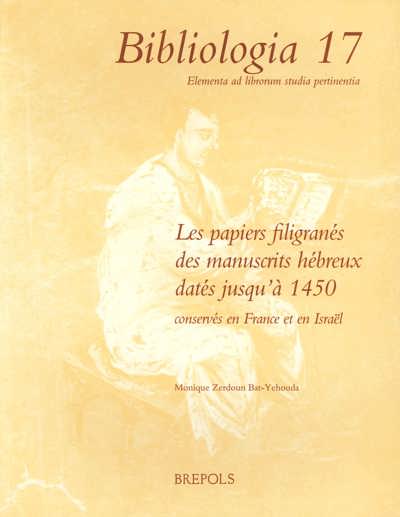
- Pages: 352 p.
- Size:216 x 280 mm
- Illustrations:15 col., 6 tables b/w.
- Language(s):English
- Publication Year:2020
- € 90,00 EXCL. VAT RETAIL PRICE
- ISBN: 978-2-503-58563-5
- Paperback
- Available
“Livesey’s catalogue of the manuscripts at Boulogne and Saint-Omer is clearly laid out and amply documented, with five indexes (…) Indeed, the wealth of manuscripts newly available online makes the effort of collation, identification and description even more urgent. Professor Livesey is to be thanked for his service in this cause.” (Seb Falk, in Library & Information History, 2021, p. 86)
"Specialists of late medieval intellectual life and book culture will find many things of interest in these pages, including a number of methodological observations on how to reconstruct ownership of manuscripts via so-called second folio references. The same is true for those who work on late medieval monastic culture in general, for whom Livesey's book will contain a great deal of new insights. (...) his work will undoubtedly be used intensively for years to come." (Steven Vanderputten, in Sehepunkte, 21/6, 2021)
“Das vorliegende Buch ist eine sehr empfehlenswerte Lektüre für alle, die sich für Bibliotheksgeschichte sowie für spätmittelalterliche Kloster- und Bildungsgeschichte interessieren. Der Katalogteil, die Appendices und die Indices werden künftig wertvolle Arbeitsinstrumente für die Beschäftigung mit Handschriften aus Saint-Bertin darstellen. Es wäre zu wünschen, dass sich vergleichbare Studien anderen Klöstern und deren Bibliotheken widmen.” (Lukas J. Dorfbauer, in Mittellateinisches Jahrbuch, 57/1, 2022, p. 147)
Steven J. Livesey is Brian E. and Sandra O’Brien Presidential Professor of the History of Science at the University of Oklahoma. His research interests focus on medieval science, history of early scientific methodologies, science in medieval universities, and manuscript studies.
The traditional view of monastic orders in late-medieval scholastic culture has been relatively muted. Beyond the Franciscan and Dominican orders, and to a far lesser extent, the Augustinians and Cistercians, the older monastic orders (and especially the Benedictines) played a smaller role in the university during the thirteenth through the fifteenth centuries. Yet if the library collection of Saint-Bertin is examined more carefully, one finds that many of the books were added by alumni of the University of Paris and Louvain, and in one instance, Cologne, and that as a whole, the monastery’s collection reflected the changing currents within late medieval intellectual society. Science in the Monastery proposes to analyze Benedictine science using Saint-Bertin as a vehicle.
Introduction
Three celebrated manuscripts
Leiden, Universiteitsbibliotheek, Voss.Lat.Q.94: Lucretius’ De rerum naturaSaint-Bertin and Eleventh-Century Christian HumanismWolfenbüttel, Herzog August Bibliothek, Gud. lat. 105: Agrimensores veteres
Boulogne-sur-Mer, Bibliothèque des Annunciades 188: Aratea phaenomena
Saint-Bertin at the University
Networks of Bookmen: Pierre d’AllouagneBenedictine Science at Saint-BertinIs there a Doctor in the House? Medical Books at Saint-Bertin
New Alternatives: The University of Louvain
Mathematics and Optics
Plates
Catalogue
Boulogne-sur-Mer, Bibliothèque Municipale des Annonciades
Bibliothèque d’Agglomération du pays de Saint-Omer
Appendices
Saint-Bertin Manuscripts with Fifteenth-Century Secundo Folio References
Concordance of Eighteenth-Century Inventory Numbers and Modern Shelflist Numbers
Select Bibliography
Indexes
Index of Authors, Titles and Subjects
Initia
Index of Named Scribes and Artists
Index of Previous Owners, Donors and Users
Index of Watermarks
Manuscripts cited




